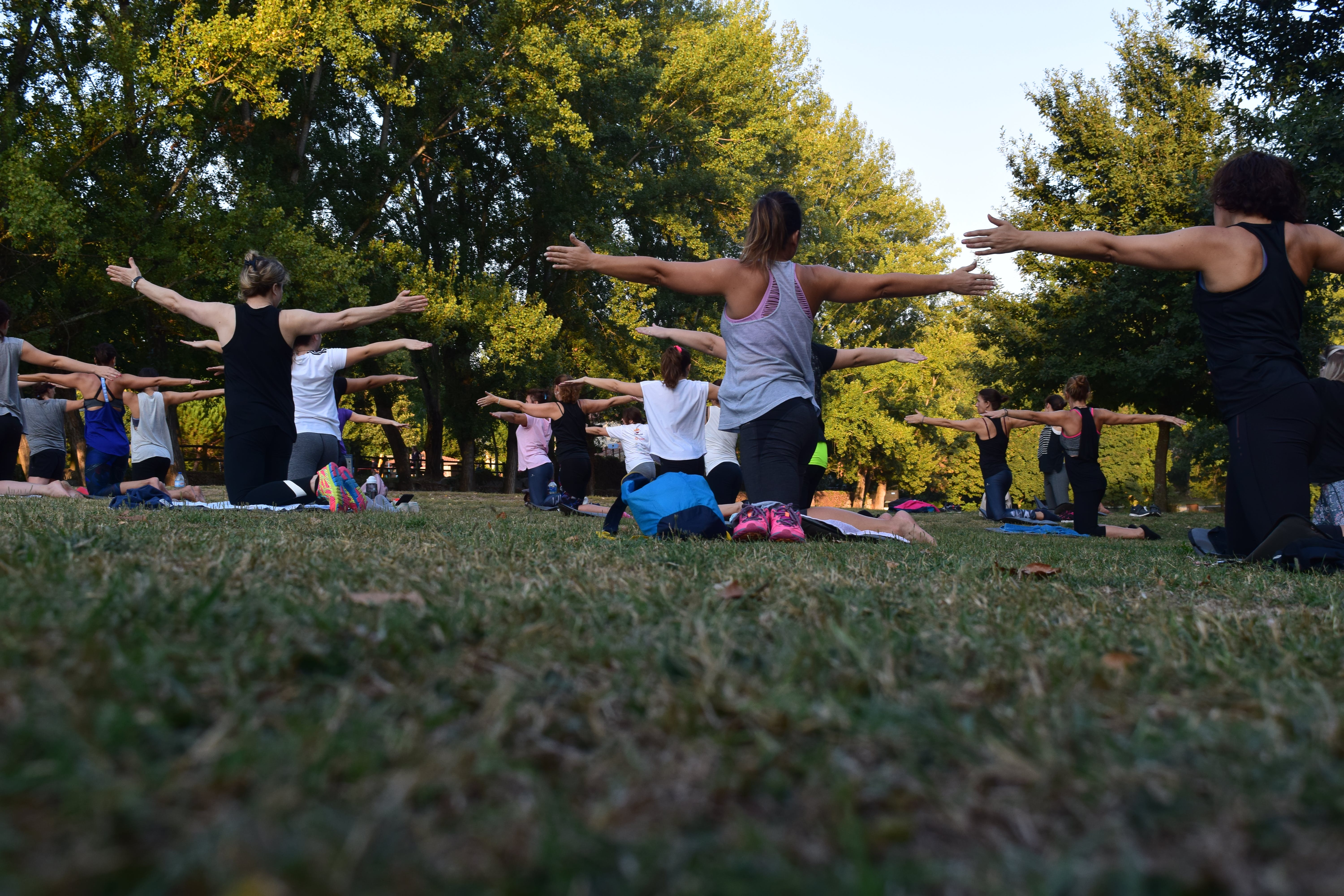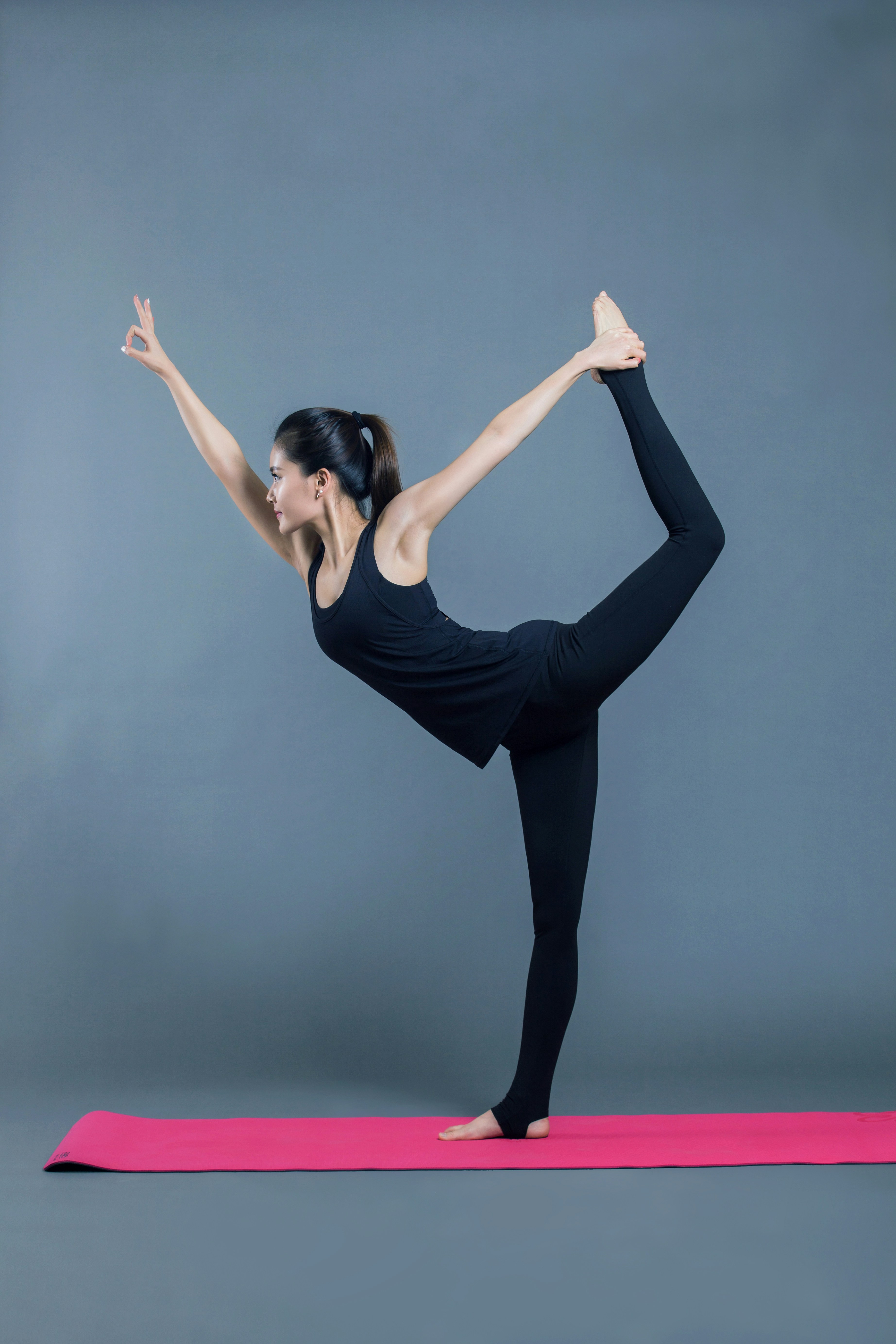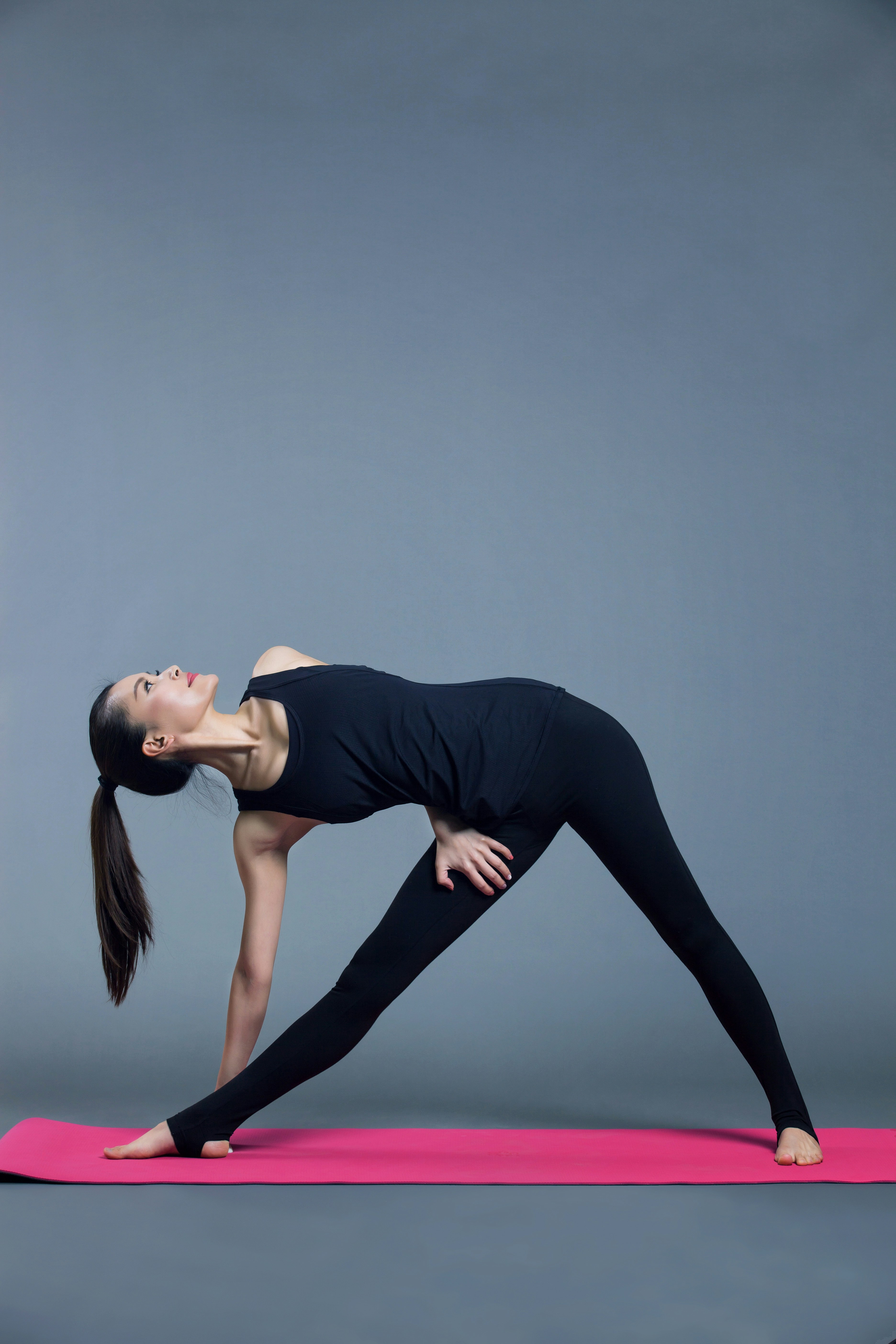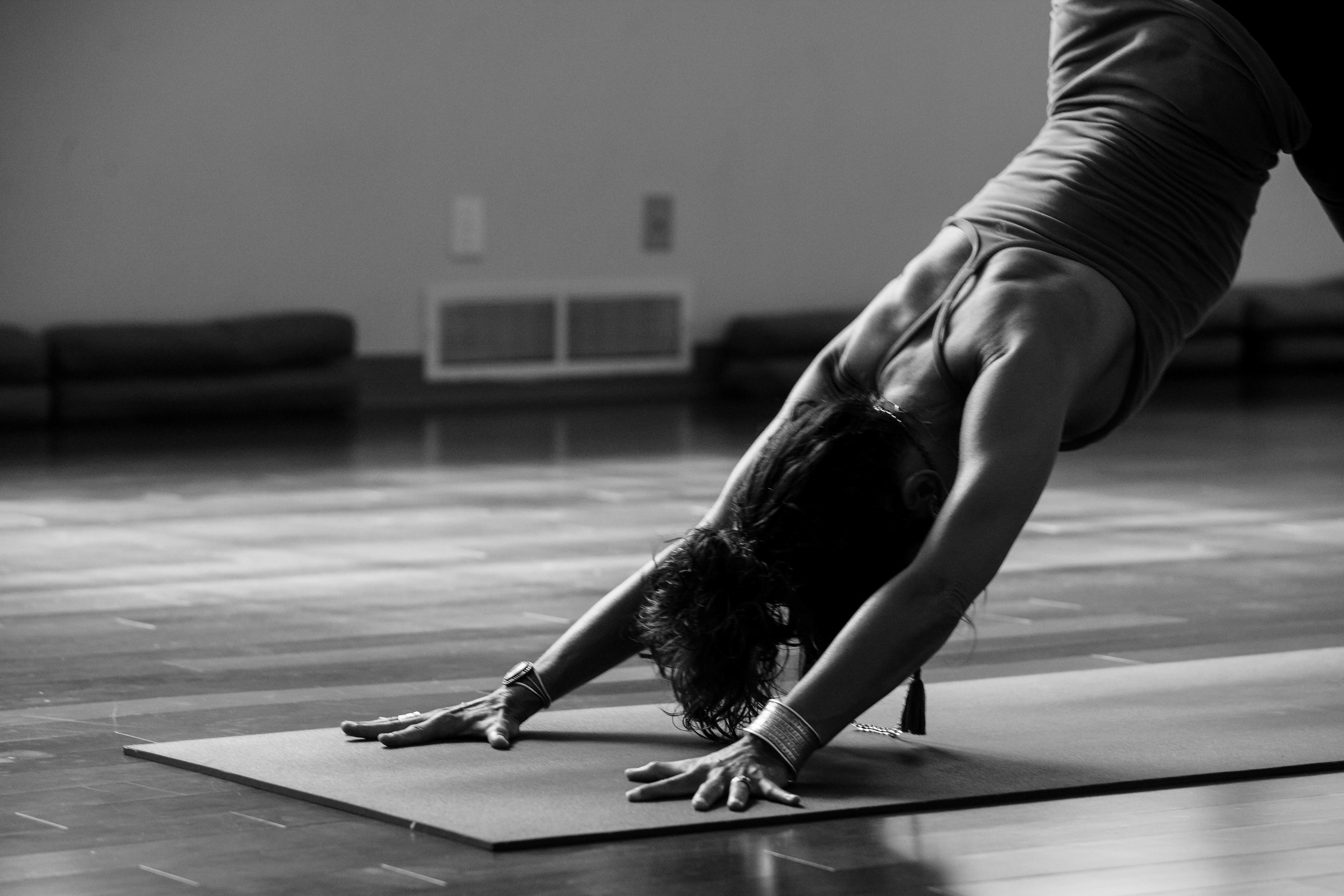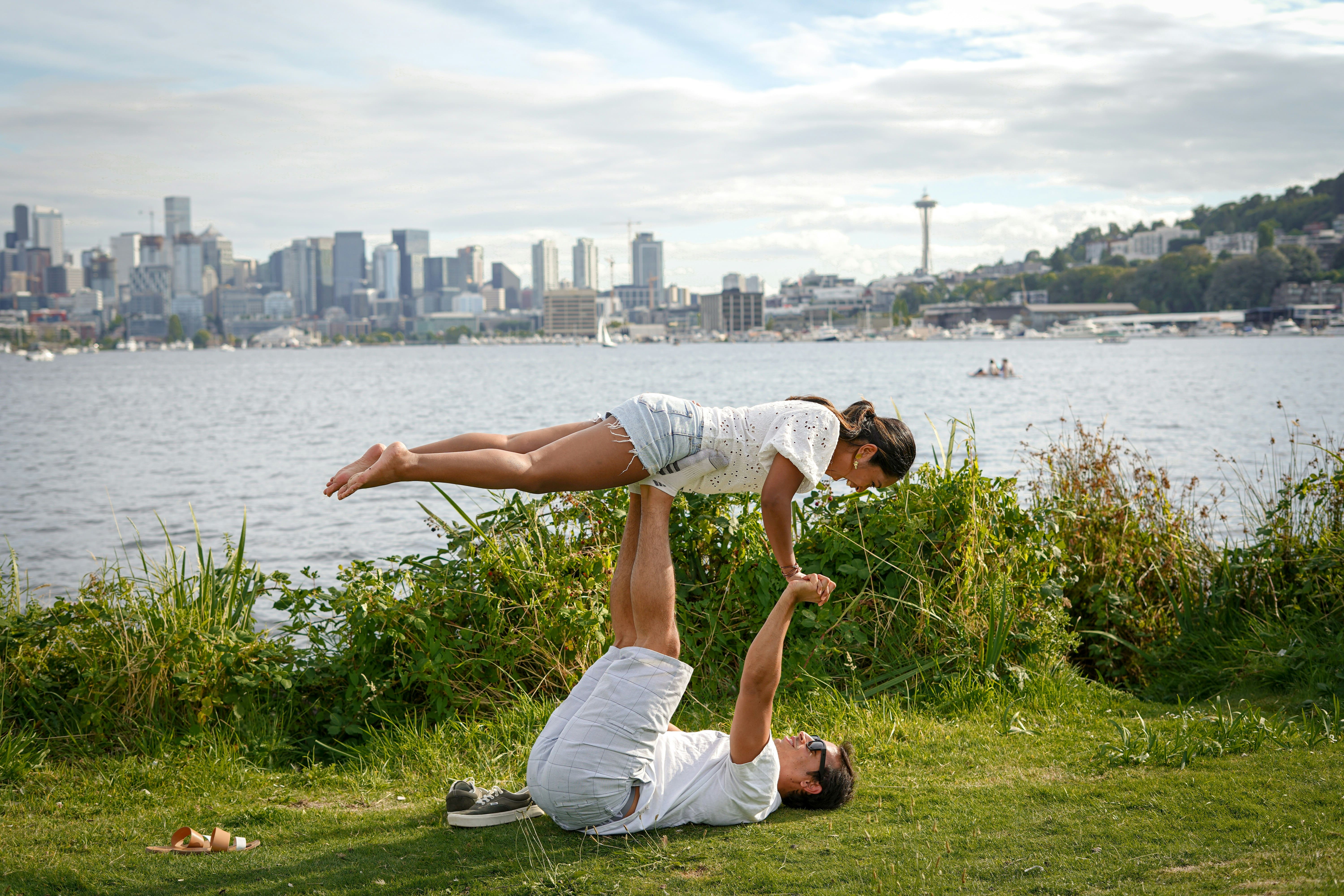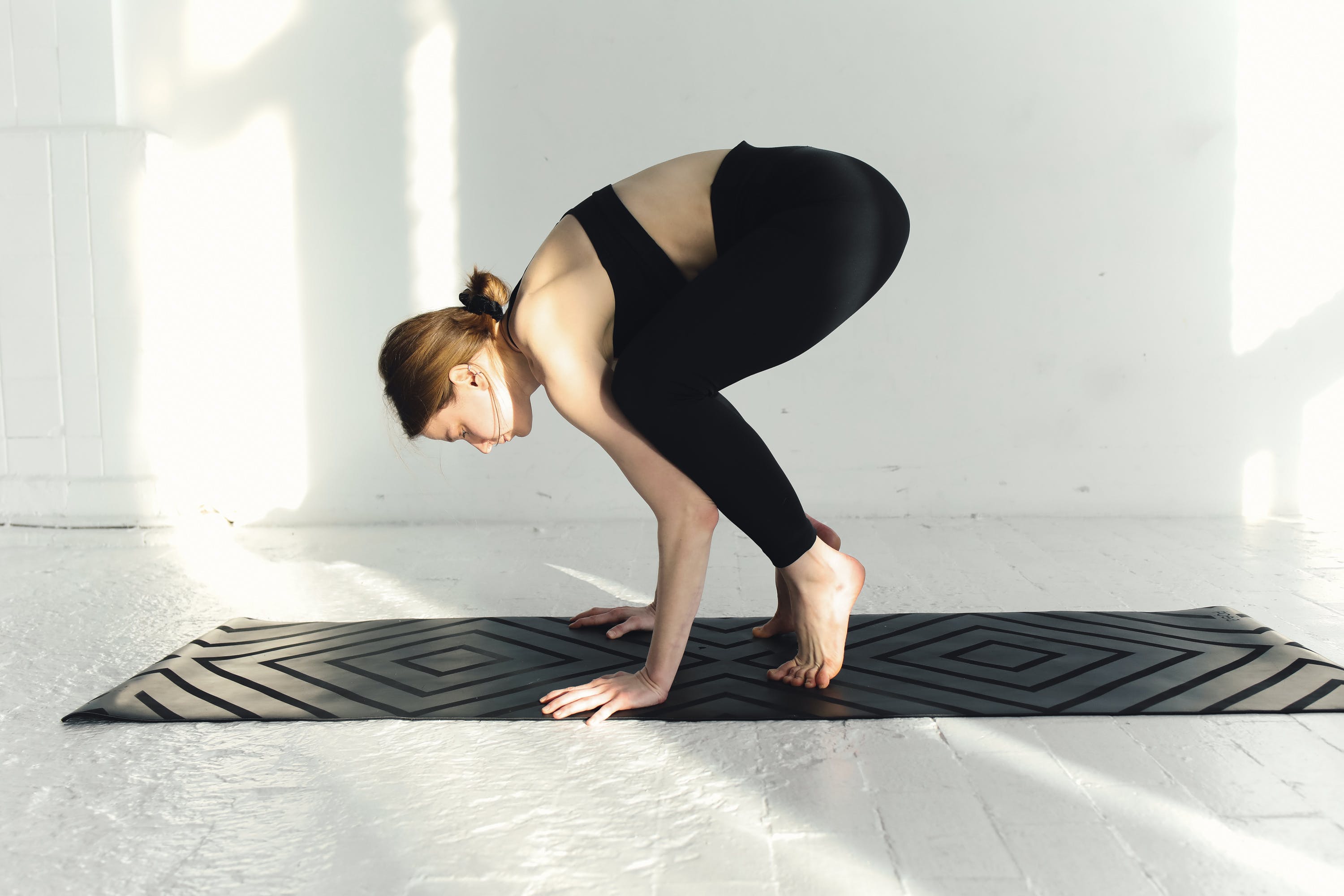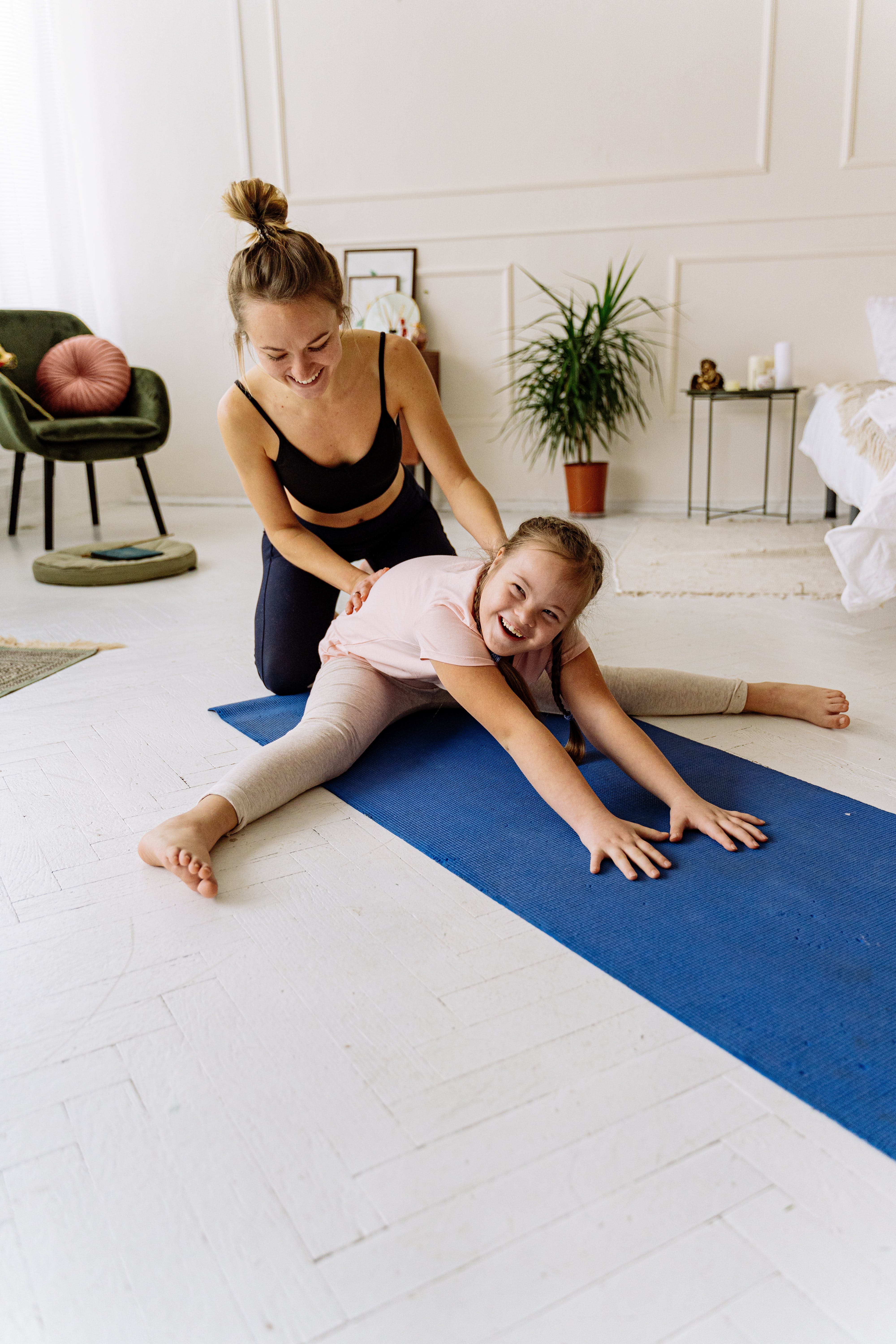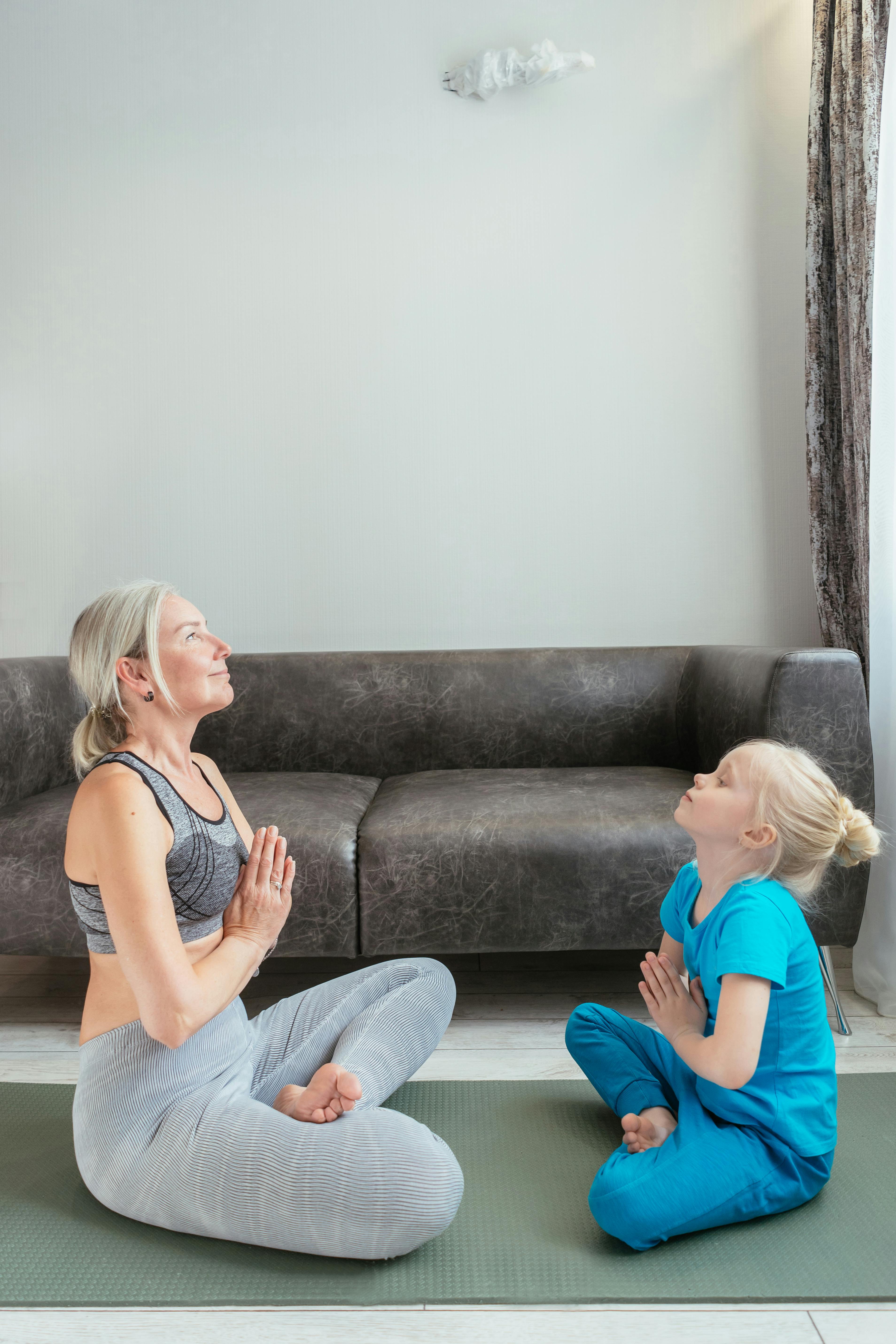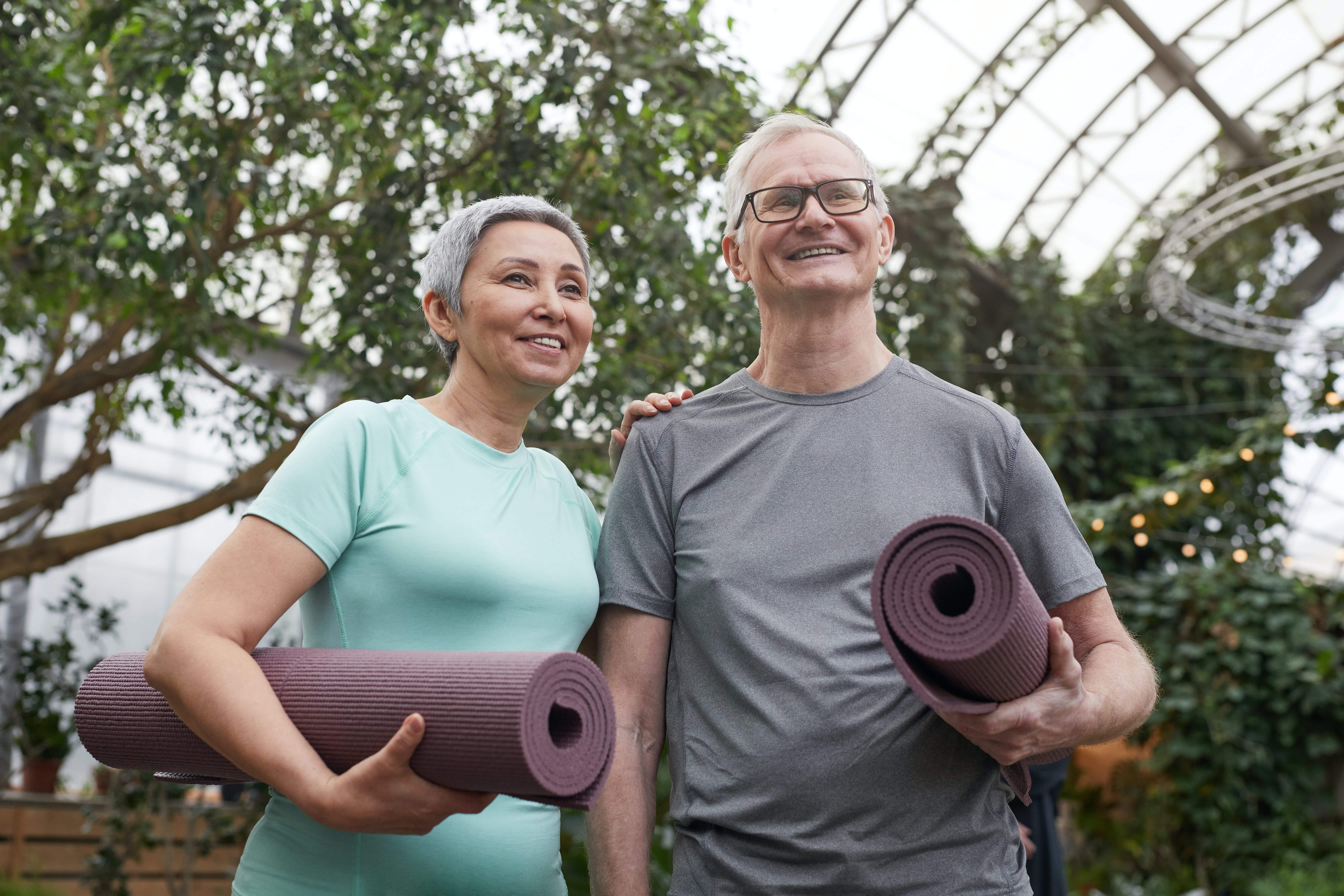Yoga is a traditional practice that incorporates various poses, breathing exercises, and meditation with the ultimate goal of promoting balance and calm in the body and mind. Those who engage in regular yoga experience an array of benefits that positively impact both their physical and mental health. Practicing yoga promotes flexibility, strength, and endurance, while reducing stress and anxiety.
In terms of physical benefits, yoga can enhance one’s musculoskeletal system through the various stretches and poses that lengthen the muscles and open the joints. In particular, standing poses like Tree Pose and Warrior Pose elongate the spine, tone the calves, thighs, hips and buttocks, and open the chest and shoulders. Twists such as Revolved Triangle Pose and Revolved Half Moon Pose also lengthen and strengthen the core. Meanwhile, hip openers like Frog Pose and Pigeon Pose stretch the hip flexors and inner thighs, alleviating tightness. Over time, these poses make the body more flexible and mobile, improving one’s range of motion for a fuller expression of movement.
Yoga also creates space in the body through its emphasis on long, full breaths. When practicing, participants are instructed to breathe deeply into the belly on inhales, fully oxygenating the blood. Long exhales facilitate a relaxation response, lowering blood pressure and heart rate. Focusing on breath stimulates the parasympathetic nervous system, halting the production of cortisol and other stress hormones. Thus, yoga helps downshift the nervous system, alleviating tension in the body and calming the chatter of the mind. Over time, these breathing techniques become integrated into daily life, promoting a steadier state of relaxation.
The mindfulness aspect of yoga also provides neurological benefits related to focus, clarity, stress management and positive thinking. The practice trains participants to stay present and detached from disruptive thoughts. Holding poses for longer durations challenges mental endurance, building the ability to concentrate amid discomfort. This in turn relieves anxiety, depression, and perceived pressures. Regular yoga leads to improved sleep quality and heightened energy levels. Thus, yoga uniquely attends to both the physical form and the inner state of peace and contentment.
10 Beginner Yoga Poses to Try
Yoga teachers tailor sequences for beginners focused on foundational poses that provide a gentle introduction the practice. These beginner yoga poses act as building blocks to safely develop strength, flexibility and body awareness. Since new practitioners tend to lack flexibility in key areas like the lower back, hips, and hamstrings, many introductory poses stretch these notoriously tight parts of the body. Others build core stability and balance.
Here are 10 beginner friendly yoga poses to incorporate into a starter sequence:
- Cat Cow Pose – Facilitates spinal mobility by moving from a convex to concave backbend
- Downward Facing Dog – Full body stretch that also builds upper body strength
- Tree Pose – Balance pose that engages the cores while opening hips and shoulders
- Child’s Pose – Provides an active rest with gentle stretch through hips, thighs and ankles
- Bridge Pose – Strengthens the glutes, hamstrings and spine by lifting hips upward
- Cobra Pose – Chest opener that stretches abdominals and shoulders
- Warrior I – Powerful lunge opening hips, thighs and chest while engaging legs
- Extended Triangle – Lateral stretch increasing flexibility along the sides of the torso
- Legs Up the Wall – Restorative inversion that reduces foot and ankle swelling
- Corpse Pose – Total relaxation reaps benefits of slowed breathing and reduced muscle tension
These entry level poses offer newcomers a safe way to build strength, balance, flexibility and body awareness. Since yoga practice is non-competitive, beginners can proceed at their own pace without self-judgement. With consistent practice incorporating these foundational postures, newer students will gain confidence to attempt more challenging sequences over time. The awareness and personal growth continue long after one’s beginner days!
Yoga Poses to Try with a Partner
Practicing yoga with a partner allows for a special shared experience that is both collaborative and bonding. Partners provide physical and moral support to one another, helping stabilise challenging balances or deepen stretches. Moving in sync and breathing together creates an intimate connection. Before beginning a partner yoga practice, set clear agreements including a safe word to communicate discomfort. Provide verbal cues and gentle touch guiding your partner into proper alignment.
Certain yoga poses naturally lend themselves well to a partner format. For example, poses requiring balance and extension like Dancer’s Pose become more accessible with a partner to lean on as needed. Heart openers like Camel Pose allow partners to safely support a deeper back bend. And yin poses like Frog Pose enable partners to apply gentle but firm pressure, intensifying the stretch.
Here are some recommended partner yoga poses to perform with a spouse, friend or family member:
- Inverted Staff Pose – One partner leans backward supported by the thighs of partner sitting with legs extended
- Double Downward Facing Dog – Begin in sync Down Dog then walk feet toward each other until bottoms touch
- Partner Forward Fold – Bend forward supported by partner’s hands clasped together into a hammock shape
- Row Your Boat – Sit facing your partner, legs long in boat shape and linked at the feet. In unison, rock back lifting feet then forward folding in sync
- Dancer’s Pose Assist – Hold hands standing side by side for balance. Partner gently presses down the thigh of the standing leg as the other leg lifts.
- Reclined Twist – Laying on back with knees bent, partner applies gentle pressure with one hand on each knee to intensify twist.
- Flying Crow Pose – One partner supports the feet or ankles of the flyer attempting the arm balance Crow Pose.
- Double Tree Pose – Stand sideways facing partner, inside legs and feet touching. Root down through outside feet and extend opposite arms overhead.
- Child’s Pose Back Stretch – In Child's Pose, partner gently presses palms and forearms along spine to massage and relieve tension.
- Partner Camel Pose – Partners face each other, hands on each other’s hips for stability. Take turns arching back with support into camel.
Yoga Poses to Boost Flexibility
For those struggling with tight hamstrings, hips, shoulders and back, certain yoga poses target key areas safely improving mobility and range of motion over time. Since these notoriously inflexible spots contribute to poor posture and increased injury risk, poses focused on increased length bring immense relief.
Here are some excellent yoga poses to boost flexibility:
Hips
- Pigeon Pose – Stretches front of hip and thigh by externally rotating one thigh
- Frog Pose – Wide stance gently externally rotates hips and opens the groins
- Half Frog – Gentler version with one knee bent accessing similar benefits
Hamstrings
- Standing Forward Fold – With straight legs, stretch hamstrings by bending from hips to reach floor
- Pyramid Pose – Intense hamstring stretch standing with one leg forward and hands on ground
- Seated Forward Fold – Bend from hip crease keeping back flat to stretch hamstrings
Lower Back
- Cat Cow – Gentle arch and curl of spine mobilises each vertebra
- Child’s Pose – Provides lower back relief by resting hips on heels
Shoulders and Upper Back
- Downward Facing Dog – Strong inverted V shape stretches entire back side from heels to fingertips
- Eagle Pose – Crossing one arm under the other requires shoulder flexibility
- Cow Face Pose – Bind shoulders in external rotation to open chest and upper back
When performed consistently overtime, poses targeting notoriously tight areas like the hips, hamstrings and shoulders help regain mobility. Be sure to move slowly into each stretch and ease up at the first sign of discomfort. With patience and practice, yoga unlocks flexibility and freedom of movement.
Incorporating Balance Poses into Your Practice
Balancing postures challenge our strength, stability and concentration. By practicing standing on one leg or shifting weight into novel positions, we awaken neglected stabiliser muscles along our ankles, feet and core. The mind also gets a workout learning to hone focus and tune out distraction to find steadiness. Those newer to balance work can start upright, engaging the toned muscles of the lifted leg. Over time, incorporating more dynamic balances like the Dancer’s Pose help take skills to the next level.
To successfully build balance skills, activate the small intrinsic muscles of the feet by spreading toes and pressing through the four corners of each foot. Engage the thighs by hugging inward, drawing lower belly muscles upward. Focus on a single unwavering gazing point to keep equilibrium. At first balances may feel impossible but be patient as muscle memory develops.
The foundation for balance proficiency starts by holding poses like Tree Pose for five full inhale-exhale cycles without wobbling. Overtime, increase the duration before switching sides. Once single leg standing feels secure introduce more challenging versions to further test stability.
For example, transition from Tree Pose into Eagle Pose by wrapping one thigh over the other and crossing arms in front of chest. Or progress to balancing in Half Moon Pose, extending the top arm and opposite leg out to the side while standing on one foot. Work on controlled transitions turning all the way under and around on the standing leg while keeping core engaged.
Those seeking a greater challenge can build up to the graceful Dancer’s Pose, standing upright while holding the lifted foot. Varying balance sequences trains the smaller supporting muscle groups while keeping the mind ultra-focused and present. The immense satisfaction and control felt after progressing to advanced stage balances proves extremely rewarding.
Top Arm Balance Poses to Build Confidence
After conquering several standing leg balances, looking to take skills up a notch into the realm of arm balancing. Poses requiring us to transfer full bodyweight into the hands and arms build tremendous upper body integrity. Lifting into these poses creates an exhilarating feeling of flying while igniting core strength. Since arm balances appear so daunting at first, breaking down proper technique and alignment sets one up for success.
The foundational arm balance pose to start with is Crow Pose. Begin in a squat with knees wide, lifting onto the balls of feet. Root down through finger pads spreading wide and place knees high up on triceps near the armpits. Shift weight just slightly forward lifting hips up to come fully off the ground. Fight the tendency to pike or collapse in hips by keeping the core strong. Gaze at one spot for stability. Over time work on straightening legs into the full expression of the pose.
After conquering Crow Pose, try modulating into fancier versions like Side Crow where shoulders internally rotate placing weight onto one hand to lift sideways. Or take the party upside down into a true arm balance handstand, using a wall for initial support. As upper body integrity advances, progress into Scorpion Pose which starts inverted then placing feet down behind the back. For the ultimate shoulder and core toner, slowly lower down into the back-bending Wheel Pose once fully inverted.
Attempting these artful solo dances rely on rock solid strength and control from fingers to shoulders. Be sure to warm up wrists well and move with control avoiding any quick dumping into joints. The journey toward floating up into a graceful handstand builds tenacity, patience and integrity each step of the way!
Partner Yoga Poses for Friends and Family
In addition to poses for couples, practicing yoga with friends or family members allows for playfulness and connection. Partners provide physical and emotional support, helping stabilise challenging balances or deepen stretches. Moving together in sync creates an intimate bond built on trust.
When preparing for partner yoga, communicate clearly about any injuries or limitations. Agree upon a safe word to indicate discomfort. Offer verbal cues and gentle touch to guide proper alignment. Check in frequently and move slowly with no ego. Smile through any tumbles!
Approachable poses for friends and family include Row Your Boat Pose, sitting with soles of feet pressed together, holding hands tightly to rock forward and back in sync. The pose challenges balance while igniting laughter. Heart openers like Back-to-Back Heart Bench also unite partners. Lie on your back, knees bent as friend places their feet onto thighs then straightens legs for a deep chest stretch.
For kids and adults, try airplane pose with the child horizontal, head and legs extended while adult holds safely underneath. Or play washing machine where kids curl into a ball supported by adult’s hands who rotates them gently side to side. These build comfort and bodily awareness through play.
Teens find excitement challenging each other into advanced poses like Flying Crow Pose. One partner supports the ankles of the flyer working on the arm balancing shape. Double Downward Facing Dog intertwines partners with hips pressed together holding the inverted V shape in sync. Move together fluidly, leaning away then pressing back into one another.
The connection and trust built through partner yoga leads to immense growth. By holding space for loved ones physically and emotionally, we form deeper bonds. Move thoughtfully with care and open communication from first steps on the mats to restorative final relaxation. The lessons learned transcend far beyond just fancy poses.
Yoga Poses for 3 People to Build Community
Expanding beyond partner poses, certain postures become even more dynamic and collaborative when involving 3 people. With another body added into the mix, teachers can demonstrate form while students emulate the shape. Friends challenge each other flowing creatively from one formation to the next. The spirit of community arises when yoga ceases to be about self-improvement but, rather, collective movement.
Some yoga poses naturally lend themselves well to trios. For example, the base person lying supine provides a solid foundation for Partner Acro Classic Pose. One friend sits leaning back onto the base’s feet, while the flyer places hands on the seated person's knees to lift hips up effortlessly.
Other balancing poses like Triangle Balance Beam use two strong Warrior II poses facing each other as “beams”. The third person lightly walks or balances along the beam, linking all three.
Playfulness emerges through syncing up repetitive flows. Facing doggie-style in Down Dog, see who can lightly tap heels down in a rhythm the fastest by internally rotating lifted legs. Laughter fills the room as the speed picks up in what could be dubbed Centipede Pose.
For those comfortable in Headstand, form a small circle, gripping ankles and slowly rotate as a unit. Gently sway and spiral, moving organically together into creative transitions like Revolving Door. Use soft gazing not just to connect with partners but also looking inward, noticing subtle movements and breaths.
Three friends practicing together allows for greater risk-taking with spots. But also cultivates deeper listening, compassion and support for one another as bodies learn, wobble, take breaks and try again. The group connections made through yoga offer meaning that extends far off the mats.
The Benefits of Consistency in Your Yoga Practice
The journey of yoga reveals itself layer by layer through consistent practice over time. When first stepping onto the mat, simply making it comfortably through a sequence seemed an ambitious goal. Foundational poses like Downward Facing Dog and Tree Pose revealed embarrassingly tight hamstrings and wobbly balance. The mind chattered anxiously during long holds and unfolded easily into distraction.
But slowly, with habitual practice, the magic of yoga begins to blossom from within. Flexibility creeps into notoriously stubborn areas as we patiently ease into hip openers and backbends. Focus sharpens increasingly aware of subtle energetic shifts and the quality of each breath. Lofty arm balances that once seemed impossibly out of reach suddenly lift effortlessly off the ground. The ever-changing inner landscape reveals itself to us in a gradual unfolding.
Beyond the obvious physical changes, a self-knowledge and emotional wisdom also awakens. We cultivate deeper compassion towards self and others. Judgments soften as we honour unique processes and organic timelines. The tendency to force or rush diminishes as we grow attune to rhythm and grace. No longer fixated solely on tricky poses as trophies, we come to view yoga as a moving meditation inviting presence. Every practitioner’s journey follows a trajectory as individual as a fingerprint.
Over time the benefits of a steady yoga practice compound upon themselves, enriching a sense of union between heart and mind. What began first as purely exercise for the body transforms into nourishment for every level of being – physical, emotional, energetic and spiritual. The evolution never ceases as yoga – like life - exists as a continual process of opening, renewing, deepening and blossoming in each present moment. Carry its teachings gracefully off the mat into all endeavours.
Related articles

Let us know you agree to cookies
We use marketing, analytical and functional cookies as well as similar technologies to give you the best experience. Third parties, including social media platforms, often place tracking cookies on our site to show you personalised adverts outside of our website.
We store your cookie preferences for two years and you can edit your preferences via ‘manage cookies’ or through the cookie policy at the bottom of every page. For more information, please see our cookie policy.
